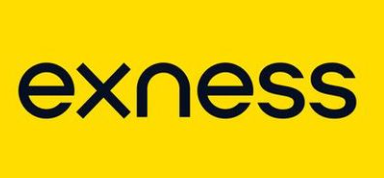Ethereum is not just another crypto coin-it’s the backbone for a whole new internet. It powers things like DeFi, NFTs, and tons of apps. In 2025, with Ethereum 2.0 finally rolling out, this blockchain is getting a massive upgrade. The advancements coming in 2025 with Ethereum 2.0 could change everything for users, developers, and investors.
What’s New With Ethereum 2.0? Ethereum 2.0 in 2025 introduces groundbreaking features.
- Ethereum 2.0 switches from Proof-of-Work (PoW) to Proof-of-Stake (PoS). This means no more miners burning tons of electricity to validate transactions. Now, people who hold ETH can “stake” it to help secure the network. This makes the whole system way more energy-efficient. It’s like 99.95% less energy used than before.
- The upgrade brings sharding, which splits the network into smaller pieces called “shards.” This lets Ethereum process way more transactions at once-up to 100,000 per second, compared to the old 15-30 per second. No more waiting ages for your transaction to go through!
Why Does This Matter? The changes in 2025 with Ethereum 2.0 are crucial for its evolution. Ethereum 2.0 in 2025 could make blockchain more efficient.
- Lower Fees: One major problem with Ethereum was the very high fees during busy times. Now, due to PoS and sharding, average fees are about $0.50 per transaction in 2025. That means DeFi and NFTs are way more accessible for everyone, not just whales.
- Faster Transactions: With more transactions happening in parallel, you don’t have to wait forever for stuff to happen. This is huge for apps that need speed, like games and metaverse projects in Ethereum’s 2025 iteration.
- Better Security: PoS makes it harder for bad actors to attack the network. With more people able to become validators, the system is more decentralized in the Ethereum 2.0 phase of 2025.
- Greener Blockchain: Ethereum 2.0 is way better for the environment. This is a big deal for companies and users who care about sustainability.
Real Impact in 2025 is seen as Ethereum 2.0 fundamentally alters the crypto landscape.
- Ethereum is processing over 2 million transactions per day, and its market cap has jumped 60% since January 2025.
- More than half of all dApps run on Ethereum, and DeFi/NFTs make up 70% of its activity.
- Lower fees and faster speeds are bringing in new users and developers. This makes Ethereum the “operating system of web3,” not just a currency.
Some Challenges Still Remain for Ethereum 2.0 in 2025 despite significant improvements.
- Even with the upgrades, some users say fees can still be high during peak times, impacting Ethereum 2.0’s effectiveness in 2025. However, it’s way better than before.
- The transition to PoS and sharding is complex. Not every project has moved over yet, but adoption is growing fast.
Conclusion
Ethereum 2.0 isn’t just a tech upgrade-it’s a total reboot happening in 2025. It makes Ethereum faster, cheaper, greener, and more secure. In 2025, this could make Ethereum the go-to platform for the next wave of internet innovation. This includes finance, gaming, and the metaverse. If you’re interested in crypto or curious about tech, pay attention to Ethereum 2.0’s advancements in 2025.
FAQ: Ethereum 2.0 in 2025
1. What is the main difference between Ethereum 1.0 and Ethereum 2.0?
Ethereum 1.0 used Proof-of-Work (PoW), which relied on miners and used a lot of energy. Ethereum 2.0’s rollout in 2025 uses Proof-of-Stake (PoS), where validators stake ETH to secure the network, making it much more energy-efficient and scalable.
2. How much faster is Ethereum 2.0 compared to the old version?
With sharding and PoS, Ethereum 2.0 can handle up to 100,000 transactions per second (tps). This is compared to just 15–30 tps on Ethereum 1.0. This is a huge speed boost!
3. Will Ethereum 2.0 reduce transaction fees?
Yes, fees have dropped significantly thanks to the upgrade. While they can still spike during busy times, they’re much lower on average-often less than $1 per transaction.
4. Is Ethereum 2.0 more environmentally friendly?
Absolutely. As Ethereum 2.0 unfolds throughout 2025, it uses about 99.95% less energy than before, making it one of the greenest blockchains out there.
5. Do I need to do anything with my ETH for Ethereum 2.0?
If you’re just holding ETH in a wallet or on an exchange, you don’t need to do anything. If you want to stake your ETH and earn rewards, you’ll need to move it to a staking platform or become a validator.
6. Is Ethereum 2.0 fully launched in 2025?
By 2025, the main features like PoS and sharding are live, but Ethereum is always evolving. Some projects are still migrating, but most major dApps and users are already on Ethereum 2.0.
7. Can Ethereum 2.0 be hacked or attacked?
No system is 100% immune. However, PoS and increased decentralization make Ethereum 2.0 much more secure and harder to attack than the old version.
If you have more questions about Ethereum 2.0, feel free to ask! The crypto world is always changing, and 2025 is shaping up to be a big year for Ethereum.
















